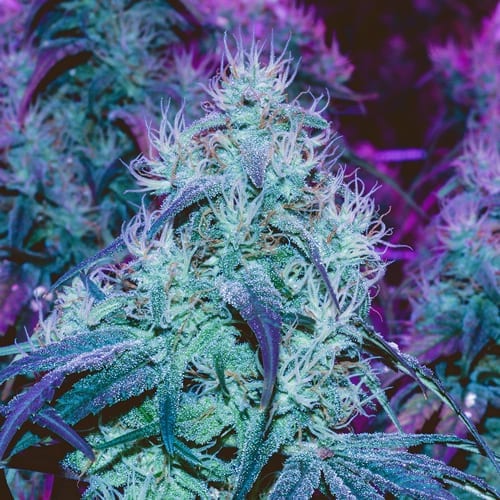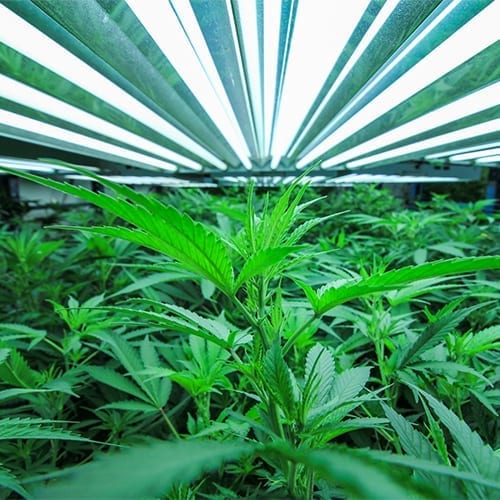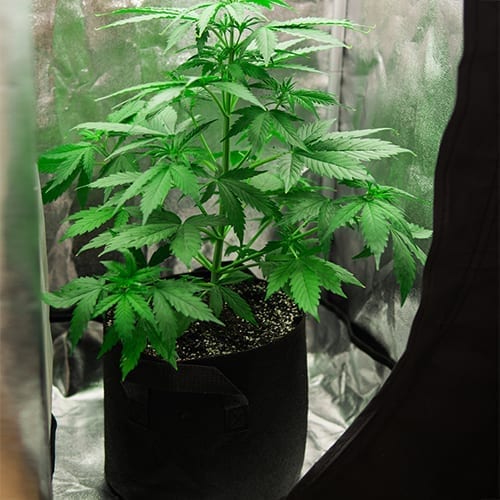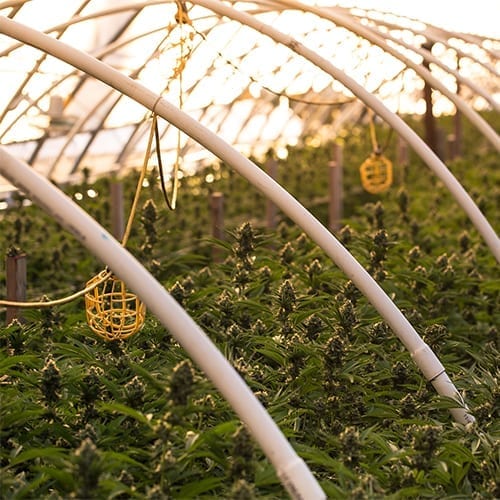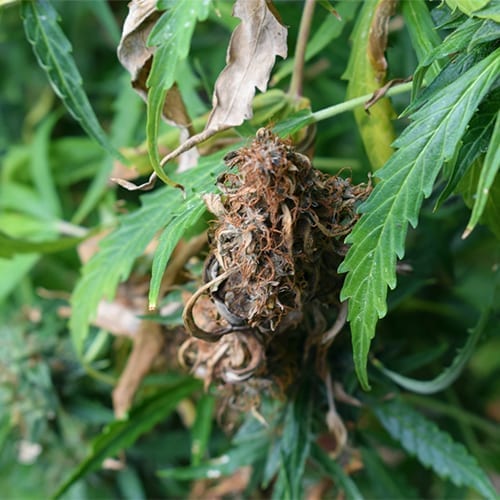
The different varieties of marijuana share many pests and diseases that can also affect other plant species. These vary depending on the cultivation method and the region.
Intensive farming, and its new technologies, have caused the proliferation of many different pathogens and parasites in farms all around the world. The use of pesticides and herbicides has greatly transformed conventional agricultural methods and techniques. Learning about these different plagues and illnesses that affect marijuana can help us identify them and, therefore, combat them appropriately.
How does Pythium work?
Pythium are, in reality, a group of root fungi, and pertain to a group called Mastigomycotina Oomycetes, and their scientific name is Peronosporales Pythiaceae Pythium. The most common species are Pythium aphanidermatum., Pythium ultimum., and Pythium debaryanum. These fungi can proliferate in seed boxes, indoor growing systems and greenhouses. It affects different parts of the plant and can totally destroy the crop. Two very different types of attacks are commonly found.
- Pre-emergent attack: This occurs before the seed has germinated. During this process the fungus introduces itself through the hydration system of the seed. This can drastically reduce the germination success rate of the seeds and can even result in zero germination. This type of attack depends on the ambient conditions and can vary greatly.
- Post-emergent attack: This type of attack occurs in the stem of the plant resulting in severe thinning near the growing substrate. The proliferation of mycelium occurs in these cells, consuming its contents.
The Pythium Life-Cycle
Pythium can attack in greenhouses, transplants, growing media, leaf litter, watering systems, etc. Greenhouse effect insects like fungus gnats and shore flies can also carry Pythium.
The propagation method takes place in the sporangium (bag like structures). Hundreds of these bags produce zoospores which encyst directly on the roots then germinate and colonise by producing string-like structures known as mycelium. The Pythium produce spores and clamidospores in the roots of decomposing plants where they can survive long periods of time in many types of soil, cultivation substrates and water, giving rise to posterior infections.
The illness causes rotting of the flower and the root. The fungus tends to activate when the temperature rises. The upper leaves wither during the day and in the beginning can recuperate at night, but in the end the plant dies. The initial symptoms are lesions in the root tips that proliferate and eventually disable them from absorbing nutrients. We can also see symptoms in the base of the stem that can extend 10cm up from the soil.
How to avoid and eliminate Pythium
To effectively control the different illnesses of either indoor or outdoor cannabis crops we need to use an integral approach employing agricultural, biological and chemical tools.
-Agricultural control: To eliminate and control these attacks we need thorough cleaning of the whole cultivation system maintaining extreme hygiene. The utensils should all be sterilized and free of all vegetative traces. There should be no standing water as the fungus will thrive there. It is important to keep the substrate clean and ventilated when in use, and if the intention is to re-use the system, correct storage is a must.
-Watering system: Storage deposits should be sterilized periodically to avoid Pythium.
-Resistant varieties: There are varieties of marijuana that are resistant to fungus and display tolerance to pathogen attacks. These tend to be the more vigorous strains and can reach the end of flowering and produce quality buds.
-Nutrient solution: In hydroponic systems, rockwool, coco coir and clay pebbles are used to germinate the seeds. The nutritive solution passes through these mediums and can contain Pythium or other pathogens that affect the plants. Disinfecting the solution can be done through biological, physical or chemical methods.
-Transplants and seedlings: Avoid diurnal heat stress when transplanting seedlings. Always choose healthy plants avoiding those with signs of ill-health. Make sure not to damage the roots during the transplant. Good air circulation, adequate spacing between seedlings, oxygenation of the nutrient solution, maximum hygiene, and avoiding watering at night or dehydration are all good practices that help avoid this pathogen.
-Climatology of the cultivation: It is important that the root temperature and the humidity of the cultivation medium are not too high. The cultivation medium should be well drained avoiding pools of water where this fungus could thrive.
-Parasite vigilance: Check the plants for signs of Pythium through the whole life-cycle of the plants. There can be no trace of infected plants left, and all infected materials and utensils should be eliminated.
-Control of Pythium carriers: There are insects that carry this illness. Bradysia impatiens, also known as the fungus gnats and Scatella stagnalis, or shore flies, are two examples.
-Biological control: Different bacteria and beneficial fungi can be used to control the Pythium fungus. Enterobacter cloacae and Psedomonas spp – and root fungi like Trichoderma hamatum and Trichoderma harzianum – have been very effective against Pythium.
How to control and eradicate Pythium
Chemical control: There are different fungicides that help prevent Pythium.
- Aromatic hydrocarbons
- Carbomates
- Dithiocarbamates
- Phenylamides
- Phosphonates
A prevention treatment is necessary in areas that have suffered a previous parasitic attack. If not, the parasite can easily persist. It is advisable to alternate the fungicides as the pathogen can develop resistance. The use of systemic and contact products can develop this resistance.
You should take note of the times of year that present the highest risk and apply the fungicides accordingly. Risk of infection is dramatically increased when the temperature reaches 30 degrees C. and the relative humidity reaches 90%. It only takes 14 hours for the infection to take hold and develop. If the sum of the average night temperature and the average relative humidity reaches 150, the risk is very high.
If left untreated, the illness caused by this fungus can easily kill marijuana plants and different, resistant strains of Pythium can survive for long periods of time in an unsterilized cultivation system. Pythium mainly attacks hydroponic systems, greenhouses, seed trays and large scale cultivations. Indoor crops using soil are not so vulnerable, but with the interchange of genetics infection is possible. One last piece of advice, if you are going to interchange selected varieties, use a prevention method to avoid a disastrous attack.
Source: www.alchimiaweb.com


